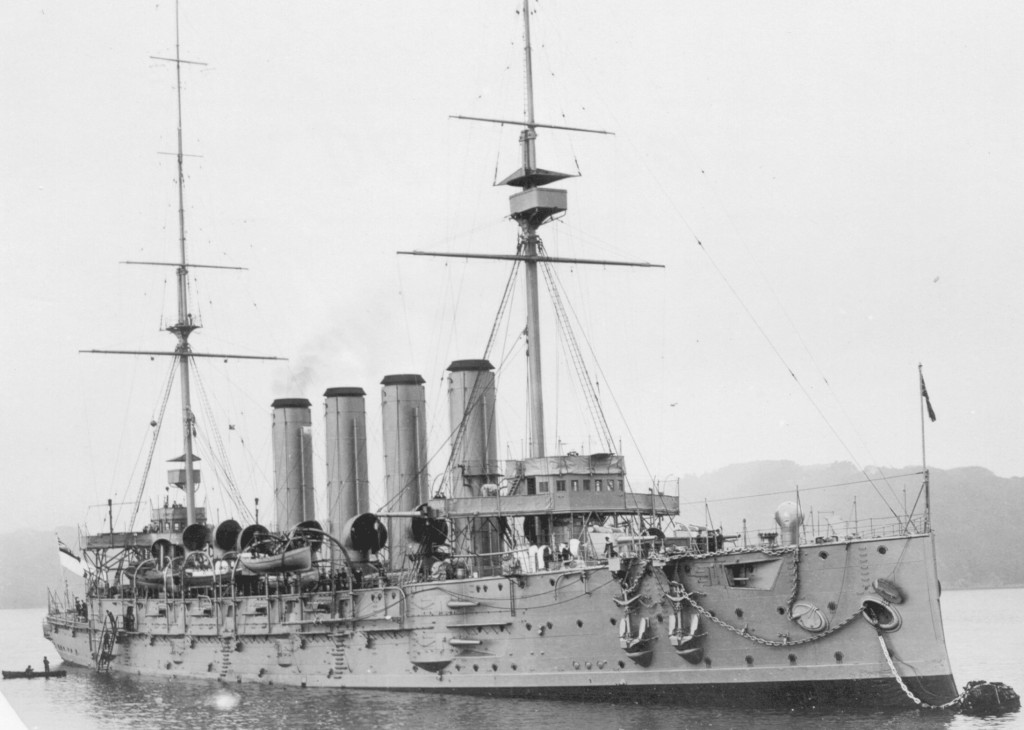
Niobe Day is celebrated by the Royal Canadian Navy (RCN) on the 21st day of October each year. Niobe Day marks the arrival of His Majesty’s Canadian Ship (HMCS) Niobe in Halifax on October 21, 1910, the first Canadian warship to enter Canada’s territorial waters and a landmark event in the beginnings of the Naval Service of Canada.
Niobe Day gives RCN personnel a chance to reflect on their collective accomplishments since 1910, what it means to be members of the profession of arms, and what is required of them to ensure the RCN’s continued excellence, both at sea and ashore, in the years to come.
HMCS Niobe
HMCS Niobe, was an 11,000-tonne armoured cruiser purchased by Canada from the Royal Navy (RN). The warship entered into Halifax Harbour on October 21, 1910, having steamed across the Atlantic from Portsmouth, England.
The date of arrival of Niobe was carefully timed to coincide with the 105th anniversary of the Battle of Trafalgar in order to symbolize the transfer to the Naval Service of Canada of the intangible and priceless winning tradition of the parent Royal Navy. It was natural for the new navy to model itself after the preeminent fighting service of the day.
Then Minister of the Naval Service, the Honourable Louis-Philippe Brodeur (father and grandfather of two future admirals of the Naval Service of Canada) welcomed Niobe and her complement with the proclamation:
“This event tells the story of a dawning epoch of self-confidence. It proclaims to the whole [world] that Canada is willing and proud to provide as rapidly as circumstances permit for her local naval defence, and to safeguard her share in the commerce and trade of the empire in whose world-girding belt Canada is the bright and precious buckle.”
Two weeks later would see the arrival of HMCS Rainbow in Esquimalt on November 7, 1910. Rainbow actually was the first ship to be commissioned as one of His or Her Majesty’s Canadian Ships (HMCS) on August 4, 1910. Her arrival in Canada came later as the ship had to sail south of the Americas and around Cape Horn in the era before the Panama Canal.
The arrival of Niobe and Rainbow was the manifestation of the decision of Parliament on May 4, 1910 to establish the Naval Service of Canada. It was a defining moment for the still young dominion.
HMCS Niobe was built by Vickers Limited in Barrow-in-Furness, England and launched on February 20, 1897, entering service in 1898.
Before being sold to Canada, (Her/His Majesty’s Ship) HMS Niobe served with the Royal Navy during the Boer War, being sent to Gibraltar to escort troop transports ferrying reinforcements to the Cape.
On December 4, 1899 HMS Niobe and HMS Doris rescued troops from the SS Ismore, which had run aground. She saw further action in the Boer War, escorting troops to Cape Town. The Queen’s South Africa Medal was subsequently awarded to the crew. She returned to the English Channel, but later escorted vessels as far as Colombo in Ceylon.
In March, 1901, HMS Niobe was one of two cruisers to escort HMS Ophir, commissioned as a royal yacht for the world tour of the Duke and Duchess of Cornwall and York (later King George and Queen Mary), from Spithead to Gibraltar, and in September of the same year she again escorted the royal yacht from St. Vincent to Halifax, Nova Scotia. Niobe continued to serve in the RN until 1910, one of eight sisters of the Diadem-class.
Upon transfer to the Naval Service of Canada, HMCS Niobe, along with HMCS Rainbow, became the first two in a long and illustrious line of HMC ships and submarines that have served and continue to serve Canada with excellence at home and abroad.
Niobe was commissioned in the RCN on 6 September 1910 at Devonport and arrived at Halifax on 21 October. Niobe was almost lost during the night of 30-31 July 1911 when she went aground off Cape Sable, necessitating repairs that were not completed until the end of 1912. In the fall of 1914, after the ravages of two years’ disuse had been made good, she joined the RN’s 4th Cruiser Squadron on contraband patrol off New York.
She returned to Halifax on 17 July 1915 and was paid off on 6 September and became a depot ship. Her upper works were wrecked in the Halifax explosion of 6 December 1917, but she continued to serve as a depot ship until 1920.
Commanding Officers of HMCS Niobe
- Commander W. B. MacDonald, RN – 6 September 1910 – 20 June 1913
- Lieutenant- Commander C. E. Aglionby, RN – 20 June 1913 – 15 August 1914
- Captain R. G. Corbett, RN – 15 August 1914 – 1 September 1915
- Acting/Commander P. F. Newcombe, RN – 16 October 1916 – 22 December 1917
- Commander H. E. Holme, RCN – 22 December 1917 – 1 June 1920
For more information on HMCS Niobe please consult the following publication:
Ken Macpherson & Ron Barrie, The Ships of Canada’s Naval Forces, 1910-2002 3rd edition (Vanwell, 2002).
Reposted from: http://www.navy-marine.forces.gc.ca/en/news-operations/news-view.page?doc=niobe-day/i0vikji8